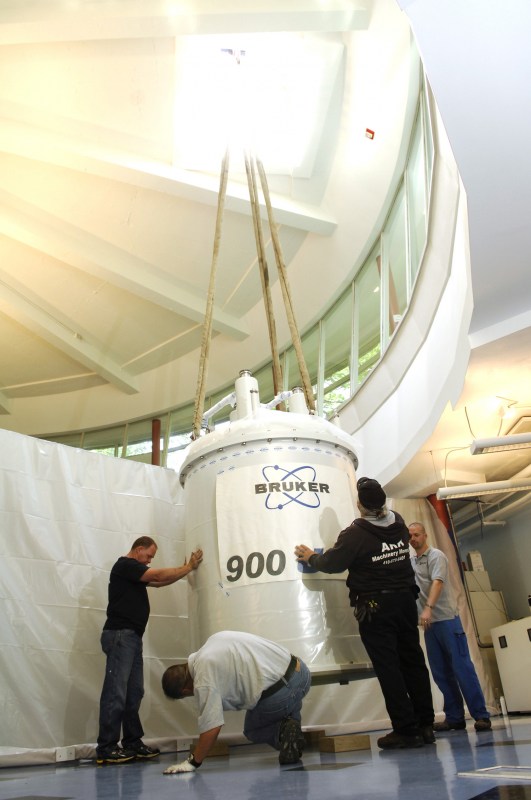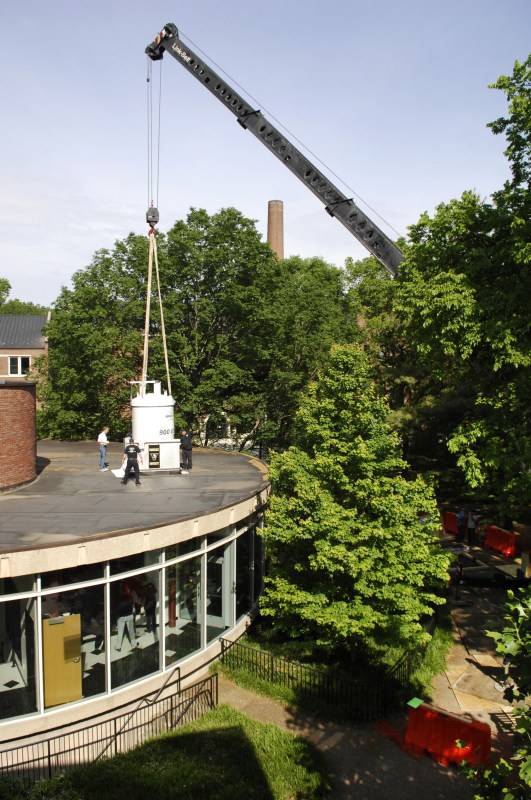
Workers install the new 7.5-ton magnet in the Biomolecular Nuclear Magnetic Resonance Facility. The magnet is part of an ultra-high field NMR spectometer that will be among the most powerful in the nation. (photo by Anne Rayner)
Huge new magnet to enhance cancer drug discovery efforts
Onlookers cheered early on the morning of Saturday, May 7, as a shattering champagne bottle christened the delivery of a $5 million, 7.5-ton magnet to Vanderbilt University.
The magnet is the main part of an ultra-high field, 900 megahertz nuclear magnetic resonance (NMR) spectrometer that will help researchers solve the mysteries of cancer, Alzheimer's disease and other diseases.
Standing 9.5 feet tall, the nearly six-foot wide white cylinder was gingerly lowered by crane through an opening in the roof of the Biomolecular NMR Facility — with just four inches of clearance.

The massive new magnet was lowered by crane, with just four inches of clearance. (photo by Anne Rayner)
The spectrometer “is going to enable us to do science that is really on the cutting edge,” said Michael Stone, Ph.D., chair of Chemistry, who uses NMR to study how DNA is damaged by mutagenic chemicals.
Once it’s up and running this summer, the powerful spectrometer will be one of about 10 in the United States, but its intended use at Vanderbilt in cancer drug discovery may be unique, faculty members said.
“Trying to fix a protein that's broken in a disease without knowing the structure is like trying to fix a watch without being able to see (inside),” explained Charles Sanders, Ph.D., professor of Biochemistry, who uses NMR to determine the structure of large membrane proteins associated with human diseases.
Sanders credited Walter Chazin, Ph.D., and his “world-class” Center for Structural Biology for helping Vanderbilt win a $3.9 million National Science Foundation grant in 2009 to purchase the spectrometer.
The university renovated the circular Biomolecular NMR Facility that houses the instrument, and the Medical Center covered the remaining costs, added Markus Voehler, Ph.D., the facility's director of operations.
According to Sanders and Stephen Fesik, Ph.D., who leads Vanderbilt's cancer drug discovery program, Saturday's delivery exemplifies the university's “visionary leadership,” which is willing to invest in the future, and its collaborative environment, which encourages scientists to work together across disciplines.
“There's a really good chance that in 10 years Vanderbilt's going to be a leader in taking structural biology information … and translating that into therapeutic discoveries,” Sanders predicted.













